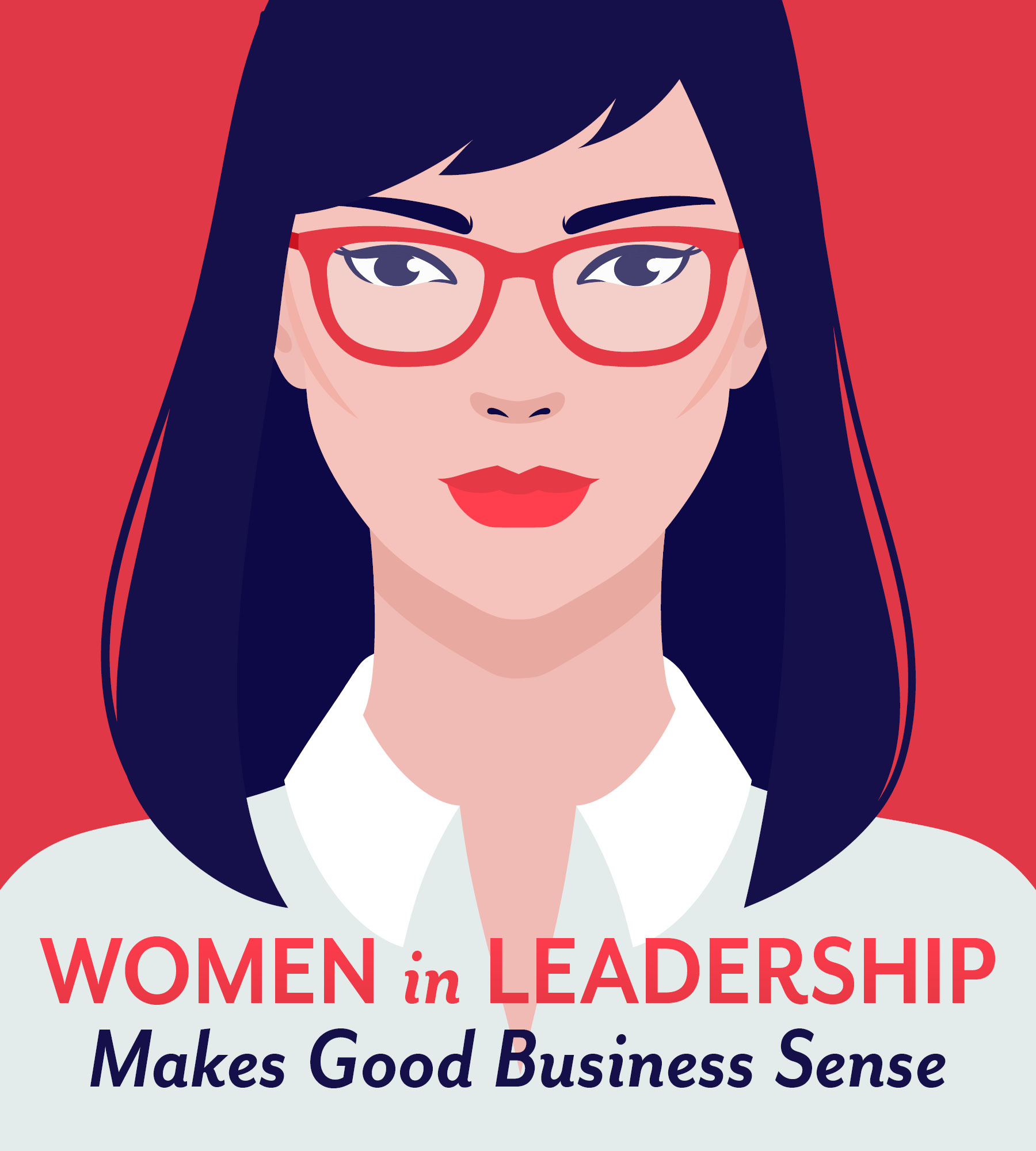Language
You can read the magazine in one of the following languages
Geolocation
You can read the global content or the content from your region

Groundbreaking Australian research, based on world-leading gender diversity datasets, has found a strong causal link between an increase in women leaders and subsequent improvements in company performance.
Specifically, an increase of 10 percentage points or more in the share of women occupying key management positions led to a 6.6 percent increase in the market value of Australian ASX-listed companies.
But despite women’s increasing labor force participation rates over many decades, and significant investment in gender equality initiatives more recently, women remain underrepresented in leadership roles across the workforce.
In Australia, women comprise only 22.3 percent of CEOs, 35.1 percent of key management positions, 34 percent of board members and 18 percent of board chairs. In comparison, the global share of women in leadership roles also remains at a low 31 percent.
So there is evidence that greater gender balance in leadership leads to better financials, and there’s been investment in interventions, yet somehow there seems to be frustratingly limited return on investment. The question is, what’s driving this gap between effort and outcome?
And more importantly, what can we do about it?
As we look to invest in women’s leadership initiatives, we need to first consider when the most impactful point to intervene would be. To determine this, we can look across the lifespan for the point at which the career paths of men and women diverge.
Turns out, it’s parenthood.
Academics at the London School of Economics and Princeton University studied the impact of parenthood on careers across 134 countries, which covers 95 percent of the world’s population. What they found was a striking gender difference.
In most countries, men and women demonstrated parallel employment trends before parenthood, but diverged sharply and persistently after having children.
For women, there was an immediate and persistent reduction in employment in almost every country in the study. The average impact of parenthood on employment rates of women relative to men varied significantly across regions.

In most countries, men and women demonstrated parallel employment trends before parenthood, but diverged sharply and persistently after having children.
Latin America had the largest penalty (38%), followed by intermediate levels across Europe, North America and Oceania (25–30%) and relatively lower levels within Asia (18%) and Africa (9%).
The data also demonstrated impacts on women’s employment persisted for up to 10 years after the birth of their first child (which was the data collection period).
In comparison, men’s careers were unaffected by parenthood.
Some would argue this clearly demonstrates that childcare responsibilities are falling more heavily on women and derailing their careers. However, others may point to differing explanations. So let’s dispel a few common myths.
One of the common explanations I hear for a lack of women at the top is that women simply don’t want these jobs. However, a 2023 study by McKinsey and Lean found that women in corporate America and Canada were just as committed to their careers and interested in being promoted as men at every stage of the pipeline.
However, they also experienced discrimination at a significantly higher rate than men, making it harder for women to advance.
Anecdotally, the mothers I coach across Australia and New Zealand still very much want to continue progressing their careers. The only caveat is that for some, their career ambitions may become delayed due to having less support and more challenges in combining work and family responsibilities.
Many mothers work flexibly to manage the dual responsibilities of work and family. For example, in Australia almost 70 percent of mothers use flexible work arrangements to care for children. Unfortunately, there tends to be a common misperception that women in flexible roles are ‘not pulling their weight’.
In stark contrast, a 2013 study by Ernst & Young found women in flexible roles were the most productive segment of the Australian labor force. They wasted the least amount of time, just 11.1 percent compared to 14.5 percent for the rest of the working population.
We are told that workplaces are meritocracies where everyone has access to the same opportunities based on their capabilities and hard work, not their identity.
However, a 2005 Cornell University study, using resumes of equally qualified candidates, found participants would hire 84 percent of women without children, compared with only 47 percent of mothers. And if they were hired, participants offered mothers an average of US$11,000 less than non-mothers.
In addition, many mothers return to work on a part-time basis after parental leave to encounter a ‘promotion cliff’. Australian research has found that while 21 percent of employees work part-time, only seven percent of managers are employed part-time, with the percentage dropping with seniority – five percent of key management personnel and three percent of CEOs.
These hiring and promotional opportunity gaps will impact the gender diversity of leadership pipelines.
A complex systemic issue like this requires well-integrated solutions that cut across the entire workplace ecosystem and in this case, center on that critical transition to parenthood.
I recommend starting with an audit of the working parent journey (yes, for all parents) within your workplace from the pregnancy announcement right through to resettling into work.
Talk to parents to find out what helped or hindered along the way. Tap into your human resources information system to discover average parental leave duration, roles parents returned to and your parental attrition rate. Read exit interviews – are there any themes? Once you have the lay of the land, you can start developing solutions.

A 2013 study by Ernst & Young found women in flexible roles were the most productive segment of the Australian labor force.
Providing tailored, specialist support directly to parents is essential for them to become better equipped to successfully navigate the key transitional stages of working parenthood.
Next, consider the critical people and elements within your workplace that can help parents to thrive. Start with managers as they implement your initiatives and directly impact parental engagement and retention. Do they know how to best support parents?
Other recommendations:
• Offer gender-neutral HR policies, such as parental leave and flexible work, to support a shared-care model so all parents can be equally involved in caregiving.
• Have senior leaders visibly role model what is possible when combining work and parenting to normalize behavior, such as flexible work hours, making it more acceptable and less stigmatized. If you’re offering bias training, make sure it goes beyond awareness raising and into creating behavioral change. Then make sure people are held to these expectations.
• Review your leadership roles: how many are part-time and flexible? How many could be? Parents can’t progress if their work schedule is incompatible with the structure of leadership roles.
• Connect your working parents by providing opportunities for them to share experiences and support each other.
• If you’re looking to recruit parents, what’s the employee value proposition?
There are significant company performance benefits of having more gender-balanced leadership, and the way forward is by focusing efforts on that pivotal moment of entering parenthood when women’s careers are at risk of derailing.
To create maximum impact, we need to embed support throughout every stage of the working parenthood transition, and within every level of the workplace to create an ecosystem for parents to thrive, and so women have a greater likelihood of rising through leadership pipelines.
As workplaces evolve to meet the modern day needs of working parents, we are able to harness the untapped potential of women throughout their childbearing years (typically mid-career level).
This will grow companies and the broader economy, creating more opportunities for all, meaning not only more women at the leadership table, but more seats for everyone around a larger table.

While supporting parents is good for business, there are also social impact benefits to enabling all working parents to have equal opportunities to fully participate in work and life.
But women can’t do this alone; we need everyone onboard.
For instance, parents raising children together can enable each other’s return to work – which is why it’s so important to offer gender-neutral workplace initiatives creating equal access (particularly to parental leave and flexibility) to support the shift toward shared care.
We must also acknowledge that the ‘parenthood penalty’ applies to all parents. While women suffer career-related penalties, others such as fathers, partners and non-birthing parents can suffer a time-based penalty of missing precious family moments.
Ultimately, while supporting parents is good for business, there are also social impact benefits to enabling all working parents to have equal opportunities to fully participate in work and life, alongside the freedom to choose what’s best for themselves and their families.
Isn’t that the kind of world you want to live in? Now is the time to step in and help create it.

Erica Hatfield
Contributor Collective Member
Erica Hatfield is a specialist career coach for working parents, psychologist, HR professional and working mother. She is also the Founder of Hummingbird Careers, a boutique career support organization that champions workplace parental equity and inclusion across Australia and New Zealand. She works closely with employers and parents through individualized 1:1 career support programs tailored to each working parent, masterclasses for managers, and data-driven insights to enhance workplace practices. For more information visit https://hummingbirdcareers.com.au/about/